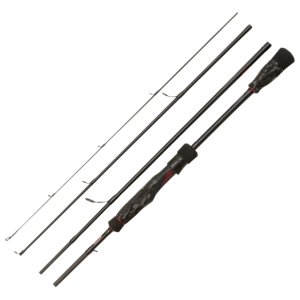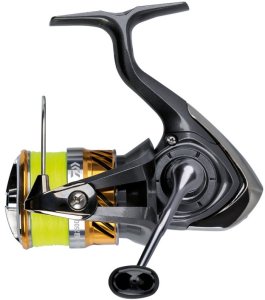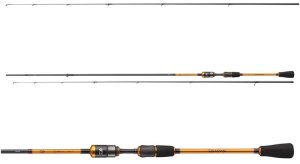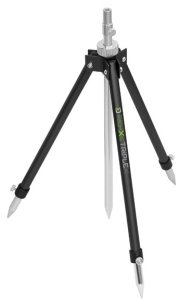- Otázky a diskuse
- Seznam
- Diskuse
Konzervanty do boilies
Vím, že lze použit přirodni konzervace solí, cukrem a nejlepší je nekonzerovavat jen sušit a zamrazit. Ale zajímá mě, jakým zpusobem firmy vyrobí hotovky, ktere vydrží tak dlouho a co mohou obsahovat jejich konzervanty ktere nabízí k prodeji. Předpokladam že to bude jen směs kyselin slabe koncentrace? Díky za odpovědi.
- Zobrazit vybrané uživatele.
 načítám...
načítám...
53x v oblíbených a 10x v ignorovaných.
Patan - Profil | St 8.1.2014 4:22:03
General News
03 June 2008 10:26
Are we damaging the health of our fish for the sake of convenience?
This week Angling Times has uncovered a number of scientific studies which show how some of the preservative chemicals used in the production of popular fishing baits could be having a lethal effect on our coarse fish.
The laboratory experiments, undertaken at institutions in both the UK and Germany, saw large numbers of captive fish fed an exclusive diet of bait readily available from high street tackle shops….and the results were shocking.
The first study, carried out by respected fisheries management consultant Ash Girdler, saw 450 three-month-old mirror and common carp arranged in 15 tanks, each containing 30 carp, then split into five ‘groups’ of three tanks.
Each ‘group’ was then fed a different bait for the duration of the 12-week experiment – sweetcorn, peanuts, maggots, trout pellets and finally shelf-life boilies from a well-known manufacturer.
In order to ensure consistency of his findings, Ash was careful to make sure that each group was fed the same calorific content of bait; those fed maggots (which are approximately 90 per cent water) received far more ‘food’ than those on a diet of trout pellets, which had the highest calorific content.
At the end of the experiment those fish fed on the trout pellets showed the greatest growth, followed by those fed on peanuts, maggots, sweetcorn and shelf-life boilies respectively.
The fact that the growth of those carp fed on an exclusive diet of shelf-life boilies was inhibited will prove shocking to many, but far more eye-opening was the fact that 85 of the 90 carp in this category also DIED before the end of the experiment.
“Not only did the carp fed on preservative-rich shelf-life boilies show no growth and then die, their internal organs were also shot to pieces. The preservatives inhibited the carp’s ability to process nutrients, so you could say, not only did they starve, they were also poisoned at the same time,” said Ash, who completed the study while in his final year at leading fisheries and aquaculture college Sparsholt, in Hants.
“The only difference between shelf-life boilies and freezer baits is the preservatives used in their manufacture. In order to satisfy my curiosity, I later replicated the test using freezer baits instead of shelf-lifes, and all the fish survived quite happily,” said Ash.
“At the time I offered my findings to the bait company whose shelf-life boilies I used, and not only did they refuse my invitation, they also dismissed my experiment out of hand, claiming it was worthless. I got a first class honours degree for the thesis, which has since been successfully peer reviewed by people such as Ian Wellby, the former head of the Environment Agency’s Fisheries Health Department,” added Ash, who is also the author of the Institute of Fisheries Management ‘Guide to Intensive Management of Stillwater Fisheries’.
While Ash’s study clearly highlights the possible health risks associated with feeding fish too many preservative-rich baits, a second extensive scientific study, conducted in Germany by the Leibniz Institute of Freshwater Ecology and Inland Fisheries in conjunction with Berlin‘s Humboldt University, looked at isolating specific chemical ingredients in shelf-life boilies that could possibly be causing the problems.
Led by fish health expert Dr Robert Arlinghaus, the study looked specifically at the effects of two well-known preservative chemicals – benzoic acid and potassium sorbate – both of which are included in many shelf-life boilie recipes across Europe and the UK.
The study centred on the toxic effects of these chemicals on zebrafish eggs under strict laboratory conditions. The tests were conducted with four different types of boilies – two commercially available shelf-life boilies, and two other boilies made with a commercially available boilie base mix not initially containing either of the preservative chemicals, but to which both were added to a combined five per cent of total weight. As a test bed, a fifth hand-rolled boilie containing no preservatives at all was also used in the experiment.
The findings were conclusive, as Dr Arlinghaus explained:
“All the zebrafish eggs exposed to a solution made from the shelf-life boilies died within 96 hours, as did those exposed to the self-made boilies to which preservatives were added. Those exposed to the boilies containing no preservatives, suffered no toxic effects. In all the trials, the toxicity increased greatly if split boilies were used.”
From Dr Arlinghaus’ findings, it could be argued that benzoic acid had been successfully isolated as THE lethal preservative ingredient in shelf-life boilies and other baits. However, further tests on the baits used in the experiment threw up an alarming fact – one of the ‘fatal’ shelf-life boilies was found to include no traces of benzoic acid, and only low levels of the far less-toxic potassium sorbate.”
“This points to the fact that there are other unknown substances used in commercially available shelf-life boilies that are potentially toxic to fish. It remains unclear which substances are involved,” the report concludes.
This huge ‘grey area’ regarding the ingredients bait companies are allowed to put into their products is something Ash Girdler remains adamant needs to be investigated.
“Its naive to think that only one bait company is using these harmful ingredients – the European bait industry is massive. You have to remember that it’s not just the fish that eat too many of these baits that could suffer ill-effects, it’s the whole ecosystem.
“Many of the preservative-rich products will remain on top of the lakebed, thereby inhibiting the vital work of bacteria on the substrate. There’s no regulation of what companies put into their products, and while it remains like this, money and profits will always dictate what goes into a bait, over fish welfare,” he said.
Petr12 - Profil | Pá 3.1.2014 19:45:06
Tato kapalina konzervační prostředek je vyroben z lidské potravinářských surovin a je určen k inhibici růstu většiny běžných forem známých rozvíjet na standardních položek potravin. To se obvykle používá ve fázi míchacího a je zahrnuta jako 30% kapalného zařazení vajec. Např li směs vyžaduje 9 vajec, doporučujeme, 6 vajec jsou používány, a další 3 vejce jsou nahrazeny tekuté konzervační látky. Jako vodítko, pracujeme na základě toho, že každé médium vejce obvykle poskytuje 50-60 ml tekutiny, a proto 9-vejce mix by vyžadovalo 150-180mililitr konzervační látky.
Tip:
Při použití této Kapalná návnada konzervační látky, doporučujeme návnady se suší po dobu 24-48 hodin, aby se snížil obsah vlhkosti na vnějších vrstev návnady, jsou delší návnady se suší, tím déle zůstanou bez plísní. K výrobě návnad, které mají delší trvanlivost, lze použít větší úrovně "konzervant". Nezapomeňte, délka doby, po kterou zůstane zachována návnady také závisí na složkách použitých v suché směsi.
GOOGLE PŘEKLADAČ JE SICE DIVNÝ, ALE MĚLI JSTE TOTO ČÍST LONI...BYLO TU PŘESNĚ ŘEČENO, CO TO JE ZA KAPALINU. A ASI BY JSTE SE DIVILI.
http://www.ccmoore.com/liquid-bait-preservative-p-896.html
dardajarda - Profil | Pá 3.1.2014 19:19:04
meďo1 - Profil | Pá 3.1.2014 16:55:18
meďo1 - Profil | Pá 3.1.2014 13:36:13
musovskavydra - Profil | Pá 3.1.2014 10:05:10
Lexoun - Profil | Pá 3.1.2014 0:10:45
Suly - Profil | Čt 2.1.2014 23:27:14
Starc55 - Profil | Čt 2.1.2014 19:39:55
Karbi30 - Profil | St 25.9.2013 8:43:00
Poraďte mi jak zakonzervovat boilli když ho nechci mrazit a rád bych přes zimu něco nakoulel a nerad bych aby to zplesnivělo nebo něco takovýho děkuji.
Kocháč - Profil | Út 17.9.2013 18:18:42
Rumacek - Profil | Út 17.9.2013 16:17:52
Rumacek - Profil | Út 17.9.2013 16:15:29
MatesJ - Profil | Po 16.9.2013 11:44:15
MatesJ - Profil | Po 16.9.2013 11:43:13
MichalU - Profil | Ne 15.9.2013 22:15:11
don Ferrari - Profil | Ne 15.9.2013 22:12:55
MichalU - Profil | Ne 15.9.2013 22:11:55
don Ferrari - Profil | Ne 15.9.2013 22:10:39
MichalU - Profil | Ne 15.9.2013 22:08:16
Kocháč - Profil | Ne 15.9.2013 22:07:05
don Ferrari - Profil | Ne 15.9.2013 21:59:22
MichalU - Profil | Ne 15.9.2013 21:56:43
Kocháč - Profil | Ne 15.9.2013 21:54:22
MichalU - Profil | Ne 15.9.2013 21:51:12
Kocháč - Profil | Ne 15.9.2013 19:19:28
Čtenáři této diskuse také sledují
Carpkillerův lexikon montáží ...968
Filmy o kaprech na dlouhé zimní večery1414
United Kingdom Style!14262
Boilie z Decatlonu4025
Výroba boilie ...2053
Dyje 5, 6, 7 - Mušov a Nové Mlýny - diskuse52574
Krátkodobá kaprařina x6769
CcMoore a vše kolem něj3373
Waftersky - rady, typy, zkušenosti784
Lov z nafukovacího člunu1185
Kde to žije - kaprařina
22:24Korda Developments a vše co k této značce patří 869
21:23Co Labe 8 441024? 4
20:13Dalešice ?? 7360
19:23Fanclub značky Shimano 10449
12:45Dyje 5, 6, 7 - Mušov a Nové Mlýny - diskuse 52574
9:35Kolik tekutin s sebou na výpravy? 19
9:18Splávek proti vázkám / lov z lodi / kaprařina 3
0:12Člun boat007 vs. Raptor 286
PáKyjský rybník, Džbán 49283
Pápan K. Nikl nebo Mik kuličky? 58
PáKrátkodobá kaprařina x 6769
ČtBoilies výbava správného kapraře 26
ČtLithiové baterie - srovnání 1106
St10ft pruty s teleskopickou částí rukojeti 178
StLegenda s názvem Daiwa Tournament S5000-T, S5500-T či S6000-T 4551
Co je nového - kaprařina + obecné
PoBleskovka: Mladý rybář boří sociální sítě svými videi. Děti odhazují mobily a jdou do přírody
SoBleskovka: Chlumečtí rybáři získali poprvé povolení k odstřelu chráněného bobra, ulovit se ho ale zatím nepovedlo
. . . Bleskovka: Světové šampionáty v muškaření na jihočeských vodách - hájení revírů a pozvánka
. . . Článek: Rybář Jarmil Koloušek a MRK.cz - ukázka z knihy Netipy + soutěž
. . . Článek: Polední ryby nejsou náhoda
. . . Miničlánek: Závěr sezóny s osobákem
. . . Recenze: Nabíjecí čelovka Fenix HM65R
. . . Miničlánek: Karas obecný - pomozte najít lokality
. . . Video: Měření hloubky ze břehu
Oznámení - kaprařina
Na toto místo můžete sami vložit své oznámení ostatním čtenářům MRKu.
Kalendář akcí - kaprařina
4.5.Závody jednotlivců - LUŽE
4.5.Jarní rybářské závody Vranovská...
5.5.Dětské rybářské závody - LUŽE
6.5.LumiCarp Cup Květen - Volné...
6.5.Eliminace do Stairs2Hell 2024...
6.5.ČESKO vs SLOVENSKO posledne...
6.5.CCAM - Vlkovská 50 těžba
7.5.Malé Sedlo Petřvald Jednotlivci...
7.5.Karp Systém Chudoba...
7.5.Závod jednotlivců na 24 hodin...
Doporučujeme e-shop
 PÁRYSŮV RYBÁŘSKÝ RÁJ
PÁRYSŮV RYBÁŘSKÝ RÁJ
Rybářské potřeby pro všechny, kteří propadli kouzlu rybařiny. Díky unikátnímu věrnostnímu systému nakupujete neustále se...











